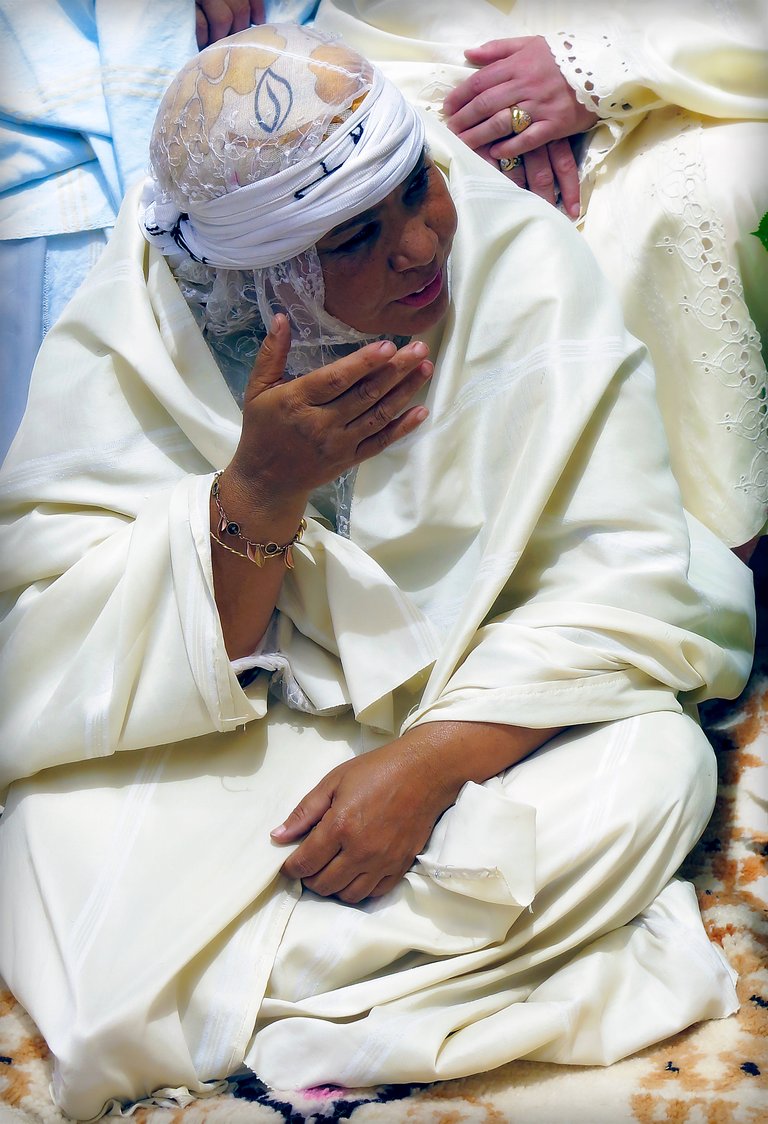
The raging streams of water cut through this gorge through the High Atlas ridge.
There, where the river Dades breaks through the formidable peaks of the High Atlas, sliding between the walls, a narrow gorge winds. When the sunlight illuminates gloomy cliffs, the black stone becomes greenish, reddish or even bright yellow, depending on the season and time of day.
Almost 200 million years ago, these rocks were coral reefs, but gradually the earth's crust's movement ascended and crumpled them, forming the High Atlas ridge. The geological history of these mountains can be read from the multi-colored layers of sandstone, limestone and marl (calcareous clay), which make up the walls of the gorge.
Thousands of years of winter rains sharpened the course of this river. From November to January, downpours fall from the sky to the High Atlas Mountains, turning a miserable stream into a roaring stream. From the rains the river can swell 20 times. In Arabic, such ephemeral rivers are called wadi or ued.
When the river Dades rages at full strength, its waters carry from the mountains a lot of vegetative debris that deforms the river bottom formed by soft rocks, each time making it deeper and deeper. In one part of the valley, the water washed away the rocks, turning them into formations resembling tables, pyramids and jagged peaks, and strange figures similar to humans; Aborigines call them the Hills of human bodies.
From snow to sands
The High Atlas is a 740-kilometer mountain range, part of a mountain system that cuts through Morocco in two. The Dades River starts high in the snow-capped mountains and flows 220 kilometers to the southwest to the confluence with the Draa River near Varzazat, an oasis and in the past a fortified French city on the northern border of the sandy expanses of the Sahara.
In the lower reaches, the river is surrounded by palm and almond groves and fields, intersected by live trellises of roses, from which sweet-smelling rose water is made here. In summer, the fig ripens, in autumn it is dried on flat roofs, and then sold at local bazaars, called bitches here.

Gorge Dades is located 24 kilometers upstream from the commercial city of Bumaln. Between the city and the canyon along the banks of the river were built old kazbakhs (fortresses) and ksuras (fortified villages); In the expanses of the fertile dark red earth, in places there are groups of trees - walnut and almonds. As the gorge narrows, the road is pressed against the water itself, and the sheer walls give the desired coolness after the burning sun.
The road crosses the river on the bridge near the village of Ait-Udinar, the most beautiful part of the gorge opens here. The stony road climbs along the gorge to the small town of Mesrir, and further, where the stony slopes of Atlas descend to the river itself, it is already very difficult to pass.
Todra Gorge
In the north-east of the Dades gorge lies the beautiful Todra Gorge. The road goes there from Tineghir straight along the crystal-clear river Todra. High date palms cast a saving shadow on climbing plants, olives, walnuts, pomegranates. Where the valley narrows, the cliffs rise vertically 300 meters, and at the narrowest point the gorge hardly exceeds 9 meters wide. African rock swallows circling near their nests, and in the sky majestic eagles Bonelli soar.
Not far from the gorge is a clean source, revered by the Berbers, because, as they say, it can work miracles: if a barren woman enters it with the name of Allah, then she can give birth. Near the Todra Gorge, the road ends, although high-terrain vehicles can make their way to the very heart of the High Atlas.
Mountaineers
The Berbers lived here and herded sheep long before the arrival of the Arabs. It is believed that they are the descendants of conquerors from West Asia, who settled throughout North Africa. They came to Morocco after the 10th century BC and were converted to Islam at the beginning of the 8th century AD These people always preferred to be free, to live in the mountains and, in spite of the harsh climatic conditions, to build fortifications there.
Courage in battle was considered their main virtue. The male Berber, suspected of cowardice, had to wear a special cap like a skullcap, and he was allowed to eat only after the women were filled. The laws of hospitality were strictly observed, and if two Berbers together tasted bread, they defended each other until death. In the 1920s, the British traveler Walter Harris described the life of the Berber village as "warlike and gloomy."

It was very unusual here to heal wounds. The edges of the wound were brought together, and next to it were planted a red ant. As soon as he caught his jaws in the skin, his head was torn off, and the jaws continued to hold the edges of the wound and fell off only after it was healed.
Berber women were always freer than their Arab sisters. The withers walked without a veil, and they had a much better chance of marrying for love. Marriage of Berbers is associated with a special procedure. Girls, brightly colored, fit, ringing with silver jewelry, to their potential husbands and begin to bargain about the size of the ransom. If they manage to agree, then the parents arrange a wedding.
Congratulations! This post has been upvoted from the communal account, @minnowsupport, by Mamasetta from the Minnow Support Project. It's a witness project run by aggroed, ausbitbank, teamsteem, theprophet0, someguy123, neoxian, followbtcnews/crimsonclad, and netuoso. The goal is to help Steemit grow by supporting Minnows and creating a social network. Please find us in the Peace, Abundance, and Liberty Network (PALnet) Discord Channel. It's a completely public and open space to all members of the Steemit community who voluntarily choose to be there.
Hey, I am a bot and my goal is to bring a smile

on your face with an awww picture:
Source